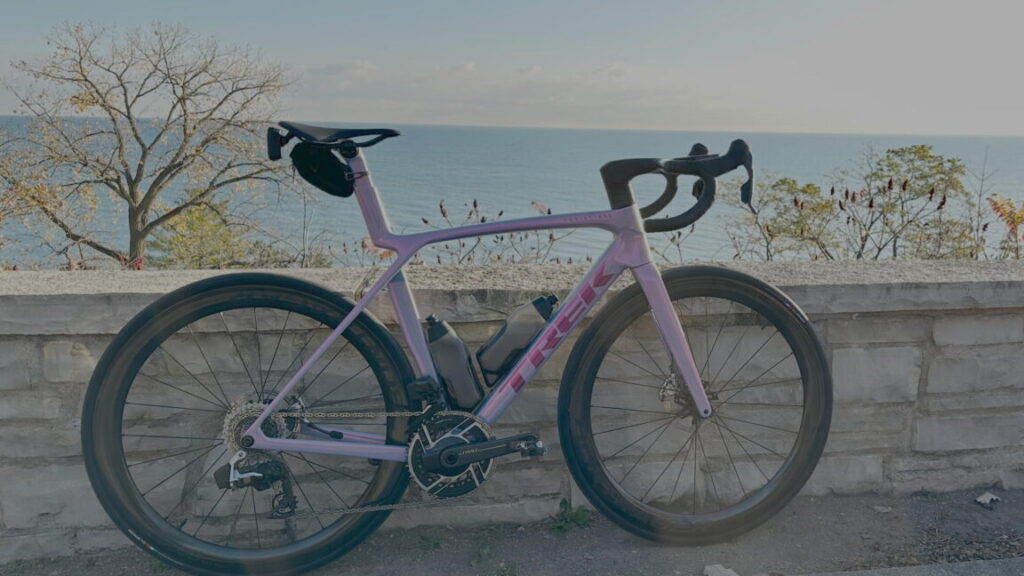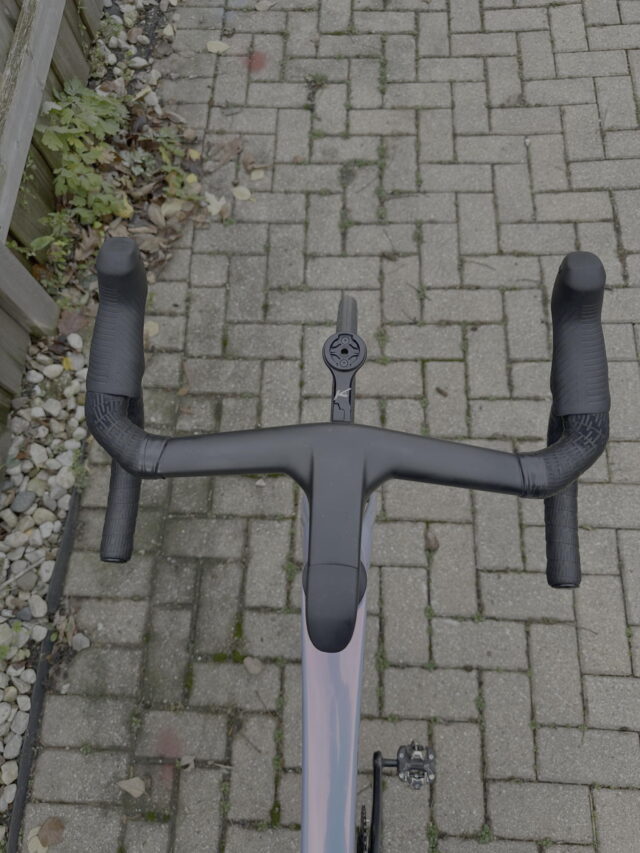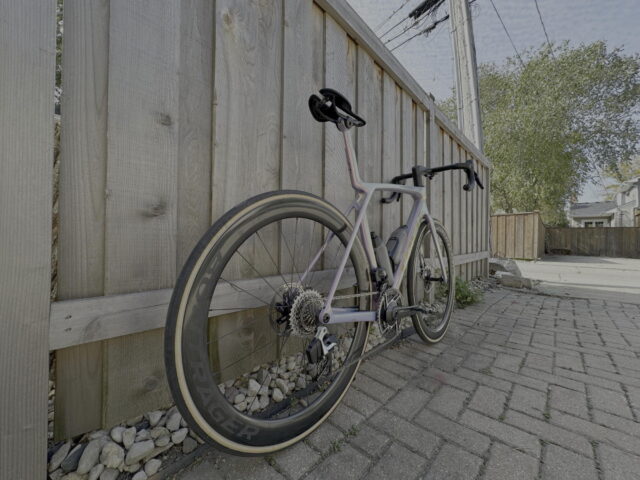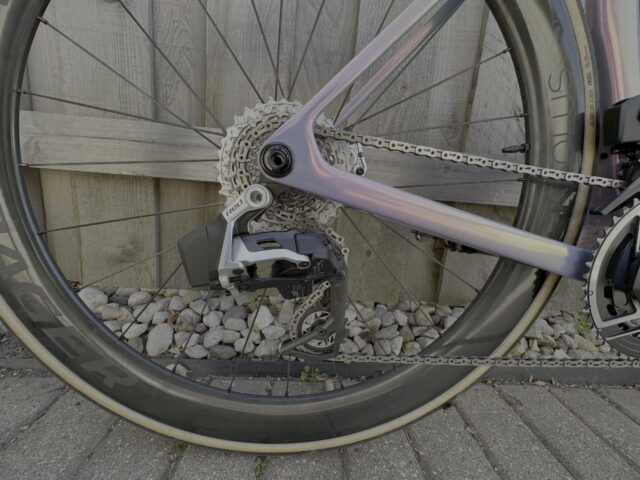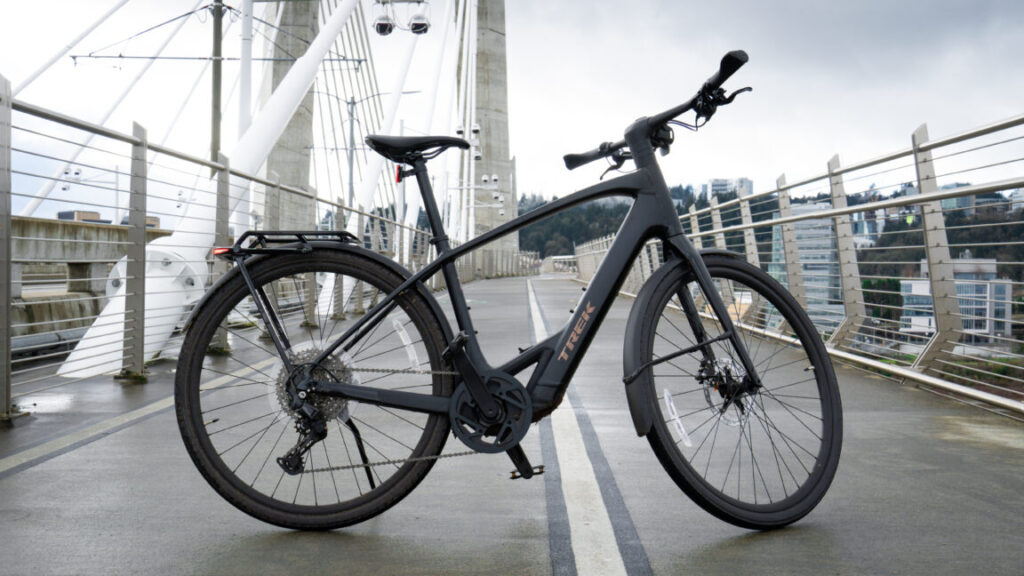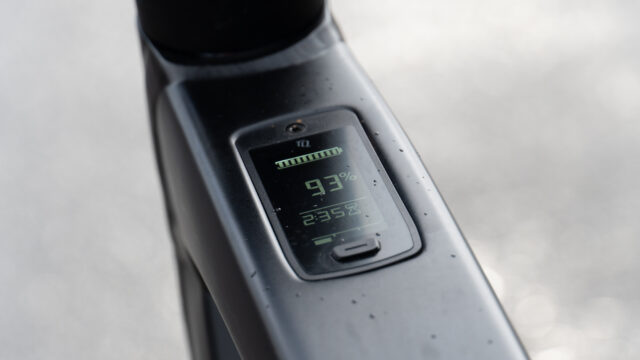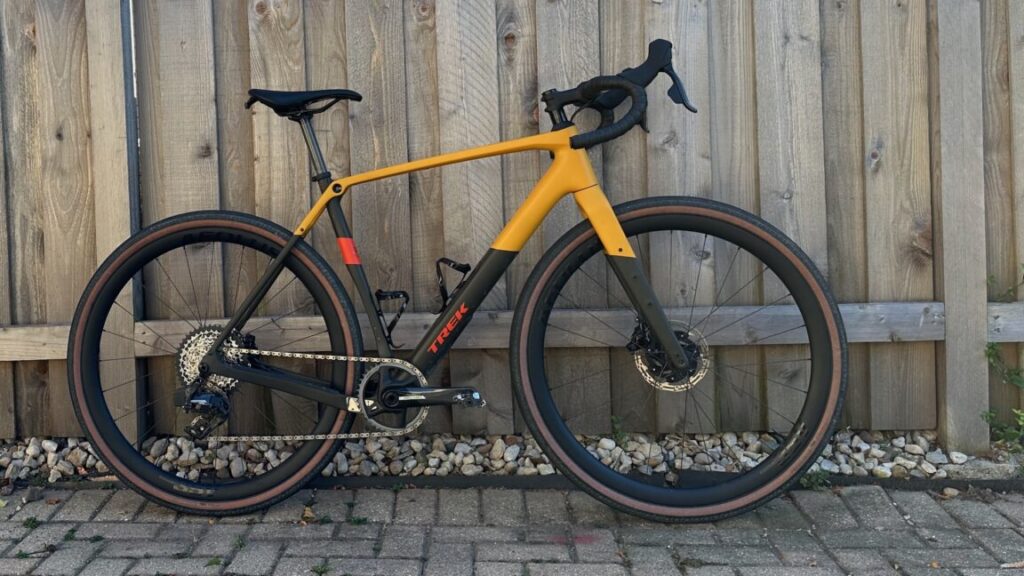The Trek Madone SLR 9 AXS Gen 8 tears up the roads and conquers climbs
Trek’s top-of-the-line performance road bike offers some surprises.
The Madone SLR 9 Gen 8 AXS with Lake Michigan in the background on a brisk morning ride. Credit: Eric Bangeman
When a cyclist sees the Trek Madone SLR 9 AXS Gen 8 for the first time, the following thoughts run through their head, usually in this order:
“What a beautiful bike.”
“Damn, that looks really fast.”
“The owner of this bike is extremely serious about cycling and has a very generous budget for fitness gear.”
Indeed, almost every conversation I had while out and about on the Madone started and ended with the bike’s looks and price tag. And for good reason.
A shiny bike
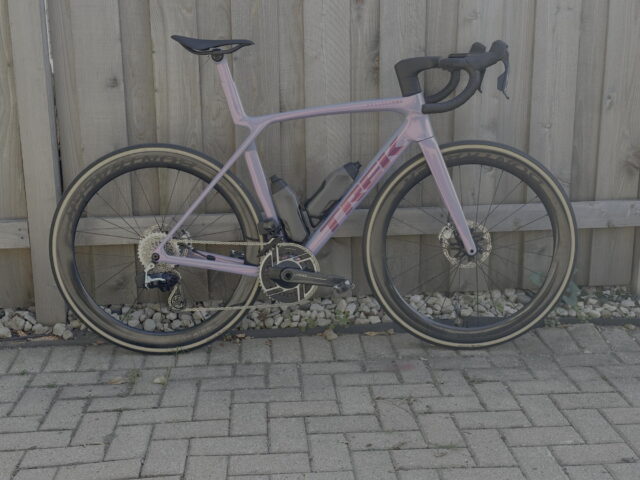
Credit: Eric Bangeman
Let’s get the obvious out of the way. This is an expensive and very high-tech bike, retailing at $15,999. Part of the price tag is the technology—this is a bicycle that rides on the bleeding edge of tech. And another part is the Project One Icon “Tête de la Course” paint job on the bike; less-flashy options start at $13,499. (And if $15,999 doesn’t break your budget, there’s an even fancier Icon “Stellar” paint scheme for an extra $1,000.) That’s a pretty penny but not an unusual price point in the world of high-end road bikes. If you’re shopping for, say, a Cervélo S5 or Specialized S-Works Tarmac SL8, you’ll see the same price tags.
Madone is Trek’s performance-oriented road bike, and the Gen 8 is the latest and greatest from the Wisconsin-based bike manufacturer. It’s more aerodynamic than the Gen 7 (with a pair of aero water bottles) and a few hundred grams weightier than Trek’s recently discontinued Emonda climbing-focused bike.
I put nearly 1,000 miles on the Gen 8 Madone over a two-month period, riding it on the roads around Chicagoland. Yes, the land around here is pretty flat, but out to the northwest there are some nice rollers, including a couple of short climbs with grades approaching 10 percent. Those climbs gave me a sense of the Madone’s ability on hills.
Trek manufactures the Gen 8 Madone out of its 900 series OCLV carbon, and at 15.54 lb (7.05 kg)—just a hair over UCI’s minimum weight for racing bikes—the bike is 320 g lighter than the Gen 7. But high-tech bikes aren’t just about lightweight carbon and expensive groupsets. Even the water bottles matter. During the development of the Gen 8 Madone, Trek realized the water bottles were nearly as important as the frame when it came to squeezing out every last possible aerodynamic gains.
Perhaps the most obvious bit of aerodynamic styling is the diamond-shaped seat tube cutout. That cutout allows the seat tube to flex slightly on rougher pavement while cutting back on lateral flex. It’s slightly smaller than on the Gen 7 Madone, and it looks odd, but it contributes to a surprisingly compliant ride quality.
For the wheelset, Trek has gone with the Aeolus RSL for the Madone SLR 9. The tubeless-ready wheels offer a 51 mm rim depth and can handle a max tire size of 32 mm. Those wheels are paired with a set of 28 mm Bontrager Aeolus RSL TLR road tires. About four weeks into my testing, the rear tire developed what looked like a boil along one of the seams near the edge of the tire. Trek confirmed it was a manufacturing defect that occurred with a batch of tires due to a humidity-control issue within the factory, so affected tires should be out of stores by now.
No wires coming off the integrated handlebar and stem. Credit: Eric Bangeman
You’ll pilot the Madone with Trek’s new one-piece Aero RSL handlebar and stem combo. It’s a stiff cockpit setup, but I found it comfortable enough even on 80-plus-mile rides. Visually, it’s sleek-looking with a complete absence of wires (and the handlebar-stem combo can only be used with electronic groupsets). The downside is that there’s not enough clearance for a Garmin bike computer with a standard mount; I had to use a $70 K-Edge mount to mount my Garmin.
The Gen 8 Madone also replaces Trek’s Emonda lineup of climbing-focused bikes. Despite weighing 36 grams more than the Emonda SLR 9, Trek claims the Gen 8 Madone has an 11.3 W edge over the climbing bike at 22 mph (and a more modest 0.1 W improvement over the Gen 7 Madone at the same speed).
Of climbs and hero pulls
The Tête de la Course colorway in iridescent mode. Credit: Eric Bangeman
The first time I rode the Madone SLR 9 Gen 8 on my usual lunchtime route, I set a personal record. I wasn’t shooting for a new PR—it just sort of happened while I was putting the bike through its paces to see what it was capable of. It turns out it’s capable of a lot.
Riding feels almost effortless. The Madone’s outstanding SRAM Red AXS groupset contributes to that free-and-easy feeling. Shifting through the 12-speed 10-33 cassette is both slick and quick, perfect for when you really want to get to a higher gear in order to drop the hammer. At the front of the drivetrain is a 172.5 mm crank paired with 48t/35t chainrings, more than adequate for everything the local roads were able to confront me with. I felt faster on the flats and quicker through the corners, which led to more than a couple of hero pulls on group rides. The Madone also has a power meter, so you know exactly how many watts you cranked out on your rides.
There’s no derailleur hanger on the Gen 8 Madone, which opens the door to the SRAM Red XPLR groupset. Credit: Eric Bangeman
There’s also a nice bit of future-proofing with the Madone. Lidl-Trek has been riding some of the cobbled classics with the SRAM Red XPLR AXS groupset, a 13-speed gravel drivetrain that doesn’t need a derailleur hanger. Danish all-arounder Mads Pedersen rode a Madone SLR 9 Gen 8 with a single 56t chainring up front, paired with the Red XPLR to victory at Gent-Wevelgem at the end of March. So if you want to spend another thousand or so on your dream bike setup, that’s an option, as the Madone SLR 9 Gen 8 is one of the few high-performance road bikes that currently supports this groupset.
Living in northeastern Illinois, I lacked opportunities to try the new Madone on extended climbs. Traversing the rollers in the far northwestern suburbs of Chicago, however, the bike’s utility on climbs was apparent. Compared to my usual ride, an endurance-focused road bike, I felt like I was getting the first few seconds of a climb for free. The Madone felt lightweight, nimble, and responsive each time I hit an ascent.
What surprised me the most about the Madone was its performance on long rides. I went into testing with the assumption that I would be trading speed for comfort—and I was happy to be proven wrong. The combination of Trek’s aerodynamic frame design (which it calls IsoFlow), carbon wheelset, and tubeless tires really makes a difference on uneven pavement; there was almost no trade-off between pace and comfort.
What didn’t I like? The water bottles, mainly. My review bike came equipped with a pair of Trek RSL Aero water bottles, which fit in a specially designed cage. Trek says the bottles offer 1.8 W of savings at 22 mph compared to round bottles. That’s not worth it to me. The bottles hold less (~650 ml) than a regular water bottle and are irritating to fill, and getting them in and out of the RSL Aero cages takes a bit of awareness during the first few rides. Thankfully, you don’t need to use the aero bottles; normal cylindrical water bottles work just fine.
The price bears mentioning again. This is an expensive bike! If your cycling budget is massive and you want every last bit of aerodynamic benefit and weight savings, get the SLR 9 with your favorite paint job. Drop down to the Madone SLR 7, and you get the same frame with a Shimano Ultegra Di2 groupset, 52t/36t crank, and a 12-speed 11-30 cassette for $7,000 less than this SLR 9. The SL 7, with its 500 Series OCLV carbon frame (about 250 grams heavier), different handlebars and fork, and the same Ultegra Di2 groupset as the SLR 7 is $2,500 cheaper still.
In conceiving the Gen 8 Madone, Trek prioritized aerodynamic performance and weight savings over all else. The result is a resounding, if expensive, success. The color-shifting Project One paint job is a treat for the eyes, as is the $13,499 Team Replica colorway—the same one seen on Lidl-Trek’s bikes on the UCI World Tour.
At the end of the day, though, looks come a distant second to performance. And with the Gen 8 Madone, performance is the winner by a mile. Trek has managed to take a fast, aerodynamic road bike and make it faster and more aerodynamic without sacrificing compliance. The result is a technological marvel—not to mention a very expensive bike—that is amazing to ride.
Let me put it another way—the Madone made me feel like a boss on the roads. My daily driver is no slouch—a 5-year-old endurance bike with SRAM Red, a Reserve Turbulent Aero 49/42 wheelset, and Continental GP5000s, which I dearly love. But during my two-plus months with the Madone, I didn’t miss my bike at all. I was instead fixated on riding the Madone, dreaming of long rides and new PRs. That’s the way it should be.
The Trek Madone SLR 9 AXS Gen 8 tears up the roads and conquers climbs Read More »
